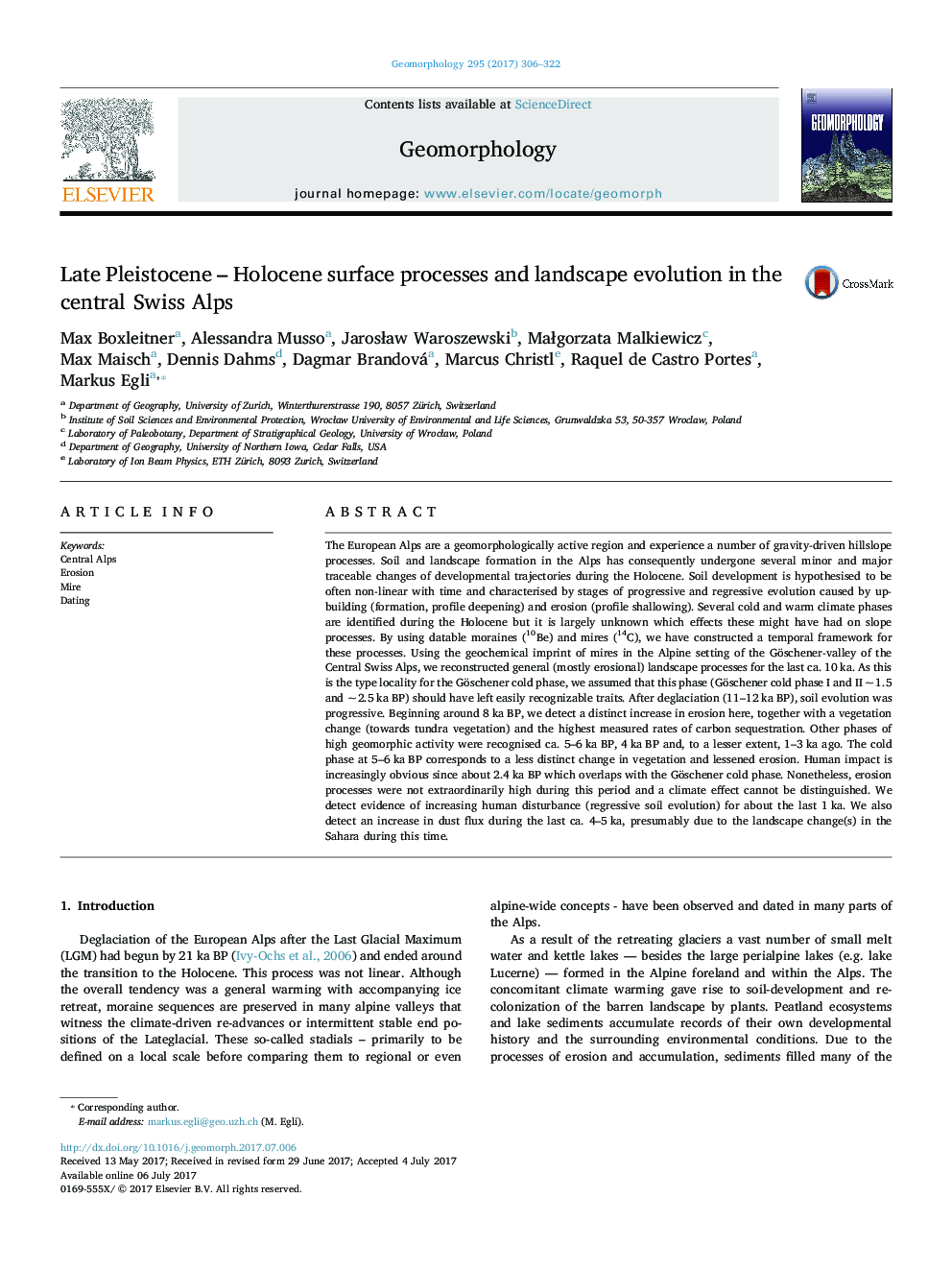| کد مقاله | کد نشریه | سال انتشار | مقاله انگلیسی | نسخه تمام متن |
|---|---|---|---|---|
| 5780758 | 1635355 | 2017 | 17 صفحه PDF | دانلود رایگان |

- The geochemical imprint of mires reflects soil and landscape evolution in the Alps.
- In the European Alps, Holocene cold phases gave often rise to increased soil erosion.
- During these cold phases, carbon sequestration rates in mires were higher.
- Sahara dust input starts to slightly affect soils about 4-5 ka BP.
- Human impact overlaps with the potential Göschener cold phase.
The European Alps are a geomorphologically active region and experience a number of gravity-driven hillslope processes. Soil and landscape formation in the Alps has consequently undergone several minor and major traceable changes of developmental trajectories during the Holocene. Soil development is hypothesised to be often non-linear with time and characterised by stages of progressive and regressive evolution caused by upbuilding (formation, profile deepening) and erosion (profile shallowing). Several cold and warm climate phases are identified during the Holocene but it is largely unknown which effects these might have had on slope processes. By using datable moraines (10Be) and mires (14C), we have constructed a temporal framework for these processes. Using the geochemical imprint of mires in the Alpine setting of the Göschener-valley of the Central Swiss Alps, we reconstructed general (mostly erosional) landscape processes for the last ca. 10 ka. As this is the type locality for the Göschener cold phase, we assumed that this phase (Göschener cold phase I and II ~ 1.5 and ~ 2.5 ka BP) should have left easily recognizable traits. After deglaciation (11-12 ka BP), soil evolution was progressive. Beginning around 8 ka BP, we detect a distinct increase in erosion here, together with a vegetation change (towards tundra vegetation) and the highest measured rates of carbon sequestration. Other phases of high geomorphic activity were recognised ca. 5-6 ka BP, 4 ka BP and, to a lesser extent, 1-3 ka ago. The cold phase at 5-6 ka BP corresponds to a less distinct change in vegetation and lessened erosion. Human impact is increasingly obvious since about 2.4 ka BP which overlaps with the Göschener cold phase. Nonetheless, erosion processes were not extraordinarily high during this period and a climate effect cannot be distinguished. We detect evidence of increasing human disturbance (regressive soil evolution) for about the last 1 ka. We also detect an increase in dust flux during the last ca. 4-5 ka, presumably due to the landscape change(s) in the Sahara during this time.
Journal: Geomorphology - Volume 295, 15 October 2017, Pages 306-322